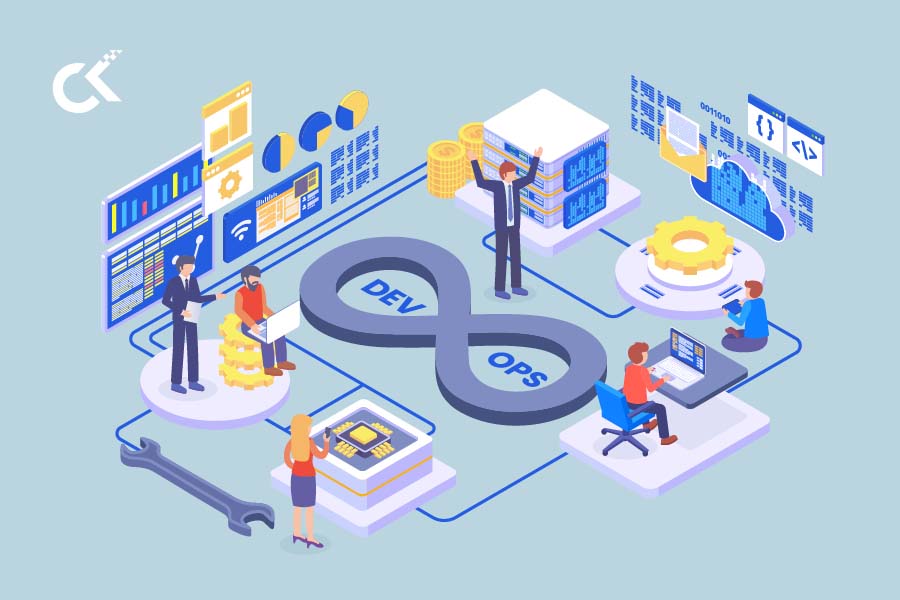An API-first approach can transform application development and is seen as a key tenet of application modernization. Organizations that followed advanced API management processes report seeing about 47% better business results than those with basic API management.
API or application programming interface is, simply put, the code that allows two different software programs to communicate with each other. It gives access to data or a service functionality in a database or app. This, of course, has far-reaching applications.
Why API-first? Top benefits for your enterprise
APIs can help enable interactions with other apps, smart devices, and human users. And today, companies in the know have begun to leverage APIs to drive digital transformation. For many organizations, it can help support their new platform business models.
An API-first approach has many proven benefits.

Here are two use cases where an API-first approach makes a tangible difference:
An API-first e-commerce platform allows for seamless integration with payment gateways, logistics providers, and customer relationship management (CRM) systems. This translates to a smoother user experience, faster checkout process, and efficient order fulfillment.
A financial services app leveraging an API-first approach can easily integrate with stock exchanges, credit bureaus, and other financial institutions. This enables features like real-time stock quotes, credit score checks and personalized investment recommendations.
What does “good API design” look like?
You can future-proof API architecture with good design.
When it comes to API design, thumb rules to follow are to design APIs with scalability and agility in mind. Leverage microservices and API gateways to create modular, loosely coupled APIs, and employ open standards and versioning to ensure compatibility and to future-proof your API investments.

These features translate to some best practices that need to be synonymous with your process.
10 best practices for an API-first development strategy
By following these best practices, you can establish a robust and successful API-first development strategy. The focus on business alignment, technical excellence and continuous improvement will ensure your APIs deliver real value and contribute to the overall success of your software projects.
Business Business Practices
Ensure the design is aligned with business goals: Don’t just build features, build value. Ensure APIs directly contribute to achieving overarching business objectives, whether it’s driving revenue growth, streamlining partner integrations, or fostering a developer ecosystem.
Common goals, a clear path, shared processes – that’s the recipe for successful app development. When there’s a strong team of principals that get both business and tech speaking the same language, that’s where we see the wins. Lucas Eagleton, Technology Principal, Cloud Kinetics
Start stakeholder collaboration early: Get stakeholders in the loop from the start – potential end users, business teams, designers, the dev team, the infrastructure team, and anyone else who may be relevant. You will be able to better define data requirements, access control requirements, as well as API use cases.
Consider business impact (for old and new users) when versioning: While you introduce new features in new API versions, also keep in mind compatibility for current/existing clients on the API.
Technical Best Practices
Follow reusable well-defined design principles: Modular API components will help with seamless integration into different applications and bring down development effort/time. Implement well-defined design principles like RESTful architecture for consistency and ease of adoption. Enforce clear naming conventions, resource structures, and response formats (JSON, XML) for efficient integration.
Build security from the start: Prioritize security throughout the API development lifecycle. Implement strong authentication and authorization mechanisms (OAuth, JWT) to control access and prevent unauthorized usage. Utilize secure communication protocols (HTTPS) and robust data validation to safeguard sensitive information.
Implement continuous testing: Your testing strategy should span the entire development process and include unit testing, integration testing, as well as performance testing. Comprehensive testing helps improve reliability, functionality, as well as scalability of the API.
Developers are your API champions. Invest in a comprehensive developer portal with clear, interactive documentation, code samples, tutorials, and sandboxes for testing. Bring the team in early if you can. If not, a large amount of rework/rewriting of components/V2 of newly released products will need to be done because it doesn’t fit the requirements that got considered too late. Ideally, if you want to combine disparate solutions, build them in at the start with a bigger picture view.
Create style guides: Be sure to create and circulate an API style guide at a company level to bring consistency across APIs. This should cover data formats, conventions, security best practices, and error-handling approaches.
“By helping design the API first, we have pieces that flow out so that everyone has a central documentation to refer to. Sure, there might be some reworking and changes, but this enables parallel teams to work on it in tandem,” says Lucas Eagleton, Technology Principal, Cloud Kinetics
Monitor API usage: Monitoring API usage patterns can help you spot areas for improvement and keep it relevant vis-a-vis customer needs.
Use automation: Automation tools can greatly streamline workflows and help cut the time and manual effort involved in API documentation generation, testing, and deployment.
Test, Test, test the API: Do remember to test the API at various stages to see how tweaks or changes or additional features are impacting overall functionality as well as security. Collaboration is key so get all stakeholders looped in early on. And then test, test, test! Keep this up throughout the development lifecycle.
API testing tools help cover a range of scenarios and test it on all the key features/areas earlier in the life cycle, a trend called “shifting left”. This helps spot issues as soon as they come in and allows teams to fix them right away. Punit Chheda, Vice President – Enterprise Architecture & Consulting, Cloud Kinetics
In an API-first approach, this is mission critical because an API that is not performing, has availability issues or errors can result in customer churn and have a negative impact on your business. The goal is to catch issues well in time so that they do not flow into production and eventually impact users. By executing API tests within CI/CD pipelines, teams can manage more rapid iterations, frequent releases, and simultaneously also lower the risk of bugs. Overall, this helps lower the risk of eroding customer trust and protects the brand image

API in action: A Cloud Kinetics case study
Here’s an instance of how we streamlined global operations for a food manufacturer with Mulesoft API deployment. A leading global food and confectionery company faced challenges integrating their complex supply chain, logistics and manufacturing systems spread across various locations. Streamlining these integrations was crucial for optimizing operations and ensuring efficient data flow.
Challenges for the enterprise included:
- Global system disparity: The company’s supply chain, logistics, and manufacturing systems operated independently across different regions, hindering data visibility and process automation.
- Integration complexity: Integrating these disparate systems required a robust and scalable solution to manage the complexity of data exchange.
The company partnered with Cloud Kinetics to implement an API-led integration strategy using Mulesoft CloudHub, a hybrid integration platform. Here’s how Cloud Kinetics addressed the challenges:
- Mulesoft CloudHub implementation: Cloud Kinetics chose Mulesoft CloudHub as the central platform for API deployment due to its scalability, flexibility, and pre-built connectors for various enterprise applications.
- API design, development, and deployment: The team designed, developed, and deployed foundational APIs that could seamlessly connect the disparate supply chain, logistics, and manufacturing systems.
- Standardized integration patterns: Established standardized integration patterns to ensure consistency, reusability, and maintainability of the APIs across the entire ecosystem.
- Expert support: The team provided ongoing support throughout the development lifecycle, including troubleshooting any integration or workflow issues, and reviewing API design, code, and security posture.
Outcomes that stood out for the client:
- Streamlined operations: The successful API deployment enabled seamless data exchange between previously siloed systems, significantly streamlining global supply chain, logistics, and manufacturing operations.
- Reusable APIs: The creation of foundational APIs provided a reusable foundation for future integrations, saving development time and resources.
- Standardized integrations: Standardized integration patterns ensured consistency and maintainability of the API landscape, simplifying future modifications and enhancements.
Mulesoft and a well-defined API strategy can empower businesses to overcome complex integration challenges and achieve operational efficiency across a global footprint.
At Cloud Kinetics, we’ve seen first hand how an API-driven approach can help our customers drive growth through new business models. It translates to faster collaboration and enables enterprises to quickly on-board new product offerings and enhance customer experience. Harsha Bhat, Senior Director – Applications, Cloud Kinetics
Prioritize API design and design your API with reusability in mind. Remember, the API world is constantly changing. Be prepared to iterate on your API design based on usage and feedback. This is an investment that pays off in terms of faster development, increased agility, and a more robust and scalable software ecosystem – one that has far-reaching business impact.




